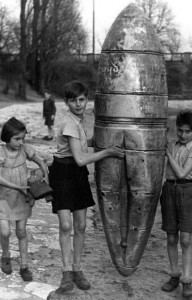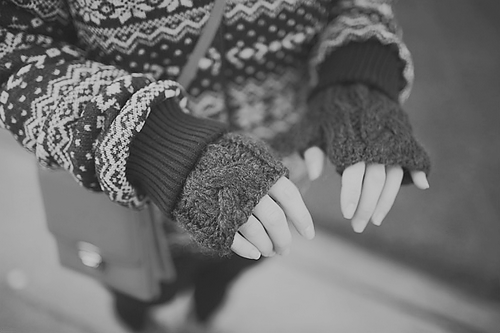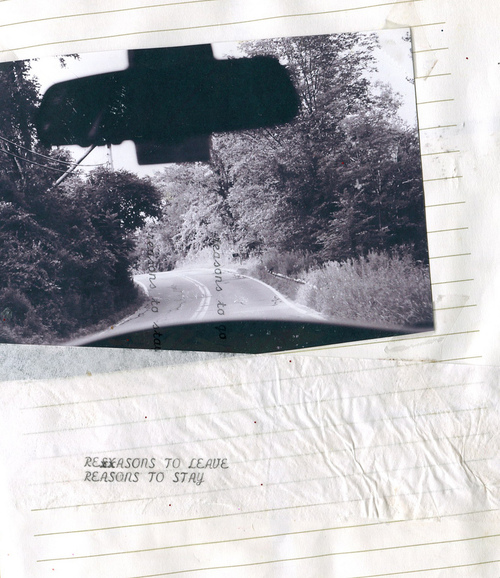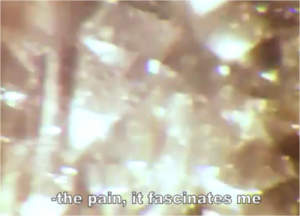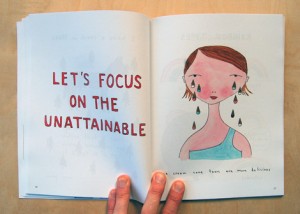Last Defence at Troubled Reactors: 50 Japanese Workers by Keith Bradsher and Hioko Tabuchi (New York Times)
A small crew of technicians, braving radiation and fire, became the only people remaining at the Fukushima Daiichi Nuclear Power Station on Tuesday — and perhaps Japan’s last chance of preventing a broader nuclear catastrophe.
They crawl through labyrinths of equipment in utter darkness pierced only by their flashlights, listening for periodic explosions as hydrogen gas escaping from crippled reactors ignites on contact with air.
They breathe through uncomfortable respirators or carry heavy oxygen tanks on their backs. They wear white, full-body jumpsuits with snug-fitting hoods that provide scant protection from the invisible radiation sleeting through their bodies.
They are the faceless 50, the unnamed operators who stayed behind. They have volunteered, or been assigned, to pump seawater on dangerously exposed nuclear fuel, already thought to be partly melting and spewing radioactive material, to prevent full meltdowns that could throw thousands of tons of radioactive dust high into the air and imperil millions of their compatriots.
The workers — and an increasing proportion of soldiers — struggled on Tuesday and Wednesday to keep hundreds of gallons of seawater a minute flowing through temporary fire pumps into the three stricken reactors, Nos. 1, 2 and 3. Among the many problems that officials acknowledged on Wednesday were what appeared to be yet another fire at the plant and indications that the containment vessel surrounding a reactor may have ruptured. That reactor, No. 3, appeared to be releasing radioactive steam.
The reactor’s operator, Tokyo Electric Power Company, said it had been able to double the number of people at the plant to 100 as a result of falling radiation levels, but that was before the sudden release of radioactive vapor. It was not immediately clear how many of the workers and soldiers at the plant might have evacuated after that.
Those remaining are being asked to make escalating — and perhaps existential — sacrifices that so far are being only implicitly acknowledged: Japan’s Health Ministry said Tuesday it was raising the legal limit on the amount of radiation to which each worker could be exposed, to 250 millisieverts from 100 millisieverts, five times the maximum exposure permitted for American nuclear plant workers.
The change means that workers can now remain on site longer, the ministry said. “It would be unthinkable to raise it further than that, considering the health of the workers,” the health minister, Yoko Komiyama, said at a news conference. There was also a suggestion on Wednesday that more workers may be brought to help save the power station.
Tokyo Electric Power, the plant’s operator, has said almost nothing at all about the workers, including how long a worker is expected to endure exposure.
The few details Tokyo Electric has made available paint a dire picture. Five workers have died since the quake and 22 more have been injured for various reasons, while two are missing. One worker was hospitalized after suddenly grasping his chest and finding himself unable to stand, and another needed treatment after receiving a blast of radiation near a damaged reactor. Eleven workers were injured in a hydrogen explosion at reactor No. 3.

The Burning House
Each of us lives in our own burning house. What is implicit in the Lotus Sutra is implicit in the present day situation in Japan with its melting nuclear cores. It is the war playing itself out, a war against nature.
One of the teachings of the Lotus Sutra is that in the dharma there is no essential truth – it is only upaya, skillful means. Who is it that acts skillfully? The bodhisatva, the one who gives their life to serve all beings. There are an infinite number of teachings because there are an infinite number of people to serve. You can’t ever understand the whole path, because it is made up of this infinity of service and people and means. To teach all beings you need many kinds of different skills. That’s why you can’t really explain the path. Has anyone here ever tried to explain the path?
Sometimes we do things that are bad, thinking that they’re good.
Sometimes we do things are good, thinking that they are bad.
For the bodhisattva it’s important to be clear about this. The position of the bodhisattva is a critique of earlier Buddhism where intention was emphasized. The new critique says that intention is not enough, that actions need to make a difference.
We’re practicing so that we can realize our lives. And when you realize your life, how can you not act? All action is social, you can’t wake up without others. We need others in order to wake up. To serve interdependence, this is how your life becomes meaningful. How can compassion be anything other than realizing the interdependence that already exists between us?
Getting Younger
Maybe as we grow closer to death and our lives become more meaningful we’ll get younger and younger. Maybe bodhisattvas stay young because they do what they love. Do you remember that time in your life when you used to do what you loved?
Lightbulb
When Edison was trying to invent the light bulb he tested 1,000 filaments. The head of his team quit in frustration. How are we ever going to find an answer? Edison replied, “Well, we now know 1,000 ways it doesn’t work. We’re closer than ever.”
The bodhisattva doesn’t need perfect understanding. Maybe understanding sometimes gets in the way of service. Our practice is to cultivate skillful tools. These tools show up in your arms and legs and become what you can use to serve others. Maybe you can write poetry and save it from extinction, or teach others how to read, or heal the sick, or teach a yoga class. You don’t choose how you are wounded, and similarly, you don’t choose how to do service.
Chapter 3: Nirvana
In Chapter 3 of the Lotus Sutra, Shariputra says that he took the idea of nirvana at face value. I thought the point was to extinguish the fires of craving and to transcend this world and not to be reborn. The Buddha replies, “I taught you the vow of the bodhisattva, to wake up with all beings. But you forgot so I reminded you for many years.” Shariputra kept forgetting and got stuck in one way of practicing in order to reach nirvana. The Buddha tells him: my purpose is just to remind us of what we already know. The whole practice is skillful means in order to relay what’s important. I appeared just to jog your memory. We’re all in this together. We’re all going to wake up together.
Dancing
Shariputra realizes that the Buddha has just made a prophecy, that he (Shariputra) is going to wake up, and become enlightened. He is so excited by this that he starts dancing. Others around him, having also heard the prediction, realize that they too will be enlightened, and so they also begin to dance. Then it begins to rain flowers. The dancing goes on and on, careening out of control, they take their top robes (their shirts, more or less) off. All their shirts come off ground and balance in mid air, and then the monks realize that the gods are also dancing. They offer the shirts off their backs to the Buddha.
Shariputra turns to the Buddha and asks: will you teach me? The Buddha says that shortly after his enlightenment, he began teaching at Varanasi, he turned the wheel of the dharma, and now it is time to turn it again. In other words, we’re going to rework the dharma. A couple of years ago David Loy wrote to the Dalai Lama and suggested that it was time to turn the wheel of the dharma – for the first time in 2,000 years! And that the dharma might enter into a discussion around climate change.
Burning House
The Buddha says that I am going to teach you with a parable. There’s a wealthy man, a single father perhaps, and he has 20 or 30 sons. There’s a fire in his old house, a house which hasn’t been well maintained, it’s filled with detritus and flammable cast offs. But the boys don’t notice the fire, they’re too busy living the collective dream of their childhoods. The father has to invent some skillful means to draw them out of the house and out of the gate. He thinks: perhaps I could tie my sons to a bench and carry it out. But they won’t be able to fit through the gate. The truth is, each of the kids have to get out by themselves. So he runs into the house and tells them that there’s three carts outside: a goat cart, a deer cart and an ox cart. Instantly the goat cart lovers rush out to see it, and then the deer cart fans, and finally the ox cart dreamers. In fact, there is only one cart outside, an ox cart. Oh well. Buddha says to Shariputra that the kids have been saved through skillful means.
Did the father lie to get the kids out of the house? When is it OK to lie to uphold the precepts? Buddhist monks in Burma are being persecuted by the military government. In order to get out of the country, they had to exit in disguise, they had to wear or become a lie.
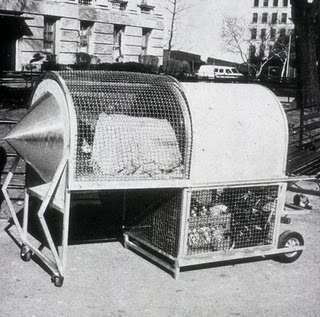
3 Properties of Upaya
Upaya requires three properties:
the action needs to be appropriate to the need/situation
skillful means: activity has to skillfully relate to the activity of the other. How to find the other in the way that they know themselves, from their point of view, to be able to speak in their language, in their language of gestures for instance, so that you know what will work? Your inspiration needs to match the needs of others.
the service/action needs to be effective. In the parable of the fire house, the father is sensitive to what his sons are interested in.
Play Money
When I started working as a psychiatrist I had a client who was an army veteran. He worked in cafeterias where all military personnel have ID cards. His job was reading their cards. But his traumatic stress was so great that anything to do with monetary exchange created anxiety. When it was time for him to pay it was awkward. I went to see my supervisor about this and he suggested perhaps my client could pay with a cheque that could be mailed. But that didn’t work. Maybe he could leave money by the door? That didn’t work either. We tried 20 things and nothing really worked. But the process of trying out these things diminished his anxiety. We had begun to play together, to play with his fear, instead of crouching underneath it. In this way, skillful means is related to circumstances.
Smoking Practice
When I was 12 I needed to escape from the anxiety of my house. I would go smoke cigarettes – this was my first practice. I would climb up the roof of the school at sunset so I could look out over the whole neighborhood. The furthest west I could see was the synagogue my family attended. This was the year before my bar mitzvah. I was in the process of making a deal with my parents: I agreed to go through the studies and the ritual of the bar mitzvah, but then I would no longer be Jewish. My parents told me I was anti-semitic. I climbed up the to the school looking west, and in the late fall everything looked like it was on fire. The neighborhood was on fire with suffering. I could see people coming home from work, nannies pushing strollers, streetcars disgorging unhappy workers. Everyone was on fire, and I was smoking, I was also on fire. It was the first moment of recognizing suffering. I would look down at the houses of my neighborhood and I knew who was cheating on who, and who was unhappily married… like every 12 year old I knew more than I should. From the school to the synagogue everyone was suffering, but the fire wasn’t only out there, I wasn’t separate from their suffering.
House
The house is on fire with suffering. It’s why we come here – because everything is burning. What is it burning with? Lust, greed, anger, denial, compartmentalization, fragmentation.
That day when I was up on the roof I thought, “I’m leaving.” I left my neighborhood that day and moved to Kensington Market. I transferred out of my school and left all my friends behind. But years later, when I started teaching yoga, I got a call from someone who wanted private lessons. They had built a room to practice yoga in, in a house that faced the backyard of the house I grew up in. It was very strange. I told them that the classes might be expensive.
The Buddha says: the world is driven by craving, and the symptom is burning. In order to leave this burning house, everyone needs a different kind of cart. The first kind of cart is the people who listen to the teachings. The second cart is praykekabuddha, who wake up on their own, through their own experience. The third cart is the cart of the bodhisattva.
Most of us come into practice because we are suffering. When you’re practicing just for yourself (or so you imagine) it can be helpful to have a linear model with nirvana at the end. But as the practice develops you start forgetting about yourself in the most helpful ways.

Face Practice
What about giving your face as a form of practice? Try giving your face, your whole face, even the parts with the shadows, the secrets and lies and difficulties and humiliations and substandard behaviours. Try giving your whole face to the streetcar driver, you kids, your partner. Most of the time we don’t give our face because we have our social face on, or we are hiding.
Or you can give them your ear, but this is a much more difficult practice.
If nirvana is only one cart, then it might as well be samsara (conditioned existence). Mahayana Buddhisms brings this new idea: when you stop trying to extinguish clinging for yourself, and only for yourself, then perhaps nirvana is samsara. Maybe you can only have nirvana because of samsara.
End of Chapter 3
At the end of Chapter 3, the Buddha asks us to think about our motivation for leaving our burning house. What motivates you? Those who get motivated in their practice and show faith in the Lotus Sutra benefit, and those who don’t are reborn as donkeys with heavy loads or will be reborn as folks who are deaf, dumb and blind. But if the Lotus Sutra is interested in serving all beings, what about donkeys? What about people who are deaf, dumb and blind? The pinball wizards, don’t they get to be served and enlightened too?
The point of the carts, the point of skillful means, is to get out of the house on your own two feet. No one can do it for you. It takes some imagination. And you might realize that once you’re out of the house that there’s cats still in the house. Right at the edge of nirvana you turn around because there are still other beings in there.
